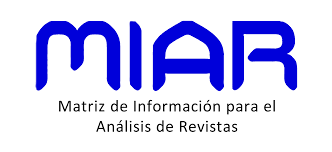FACTORS ASSOCIATED WITH BINGE EATING DISORDER IN ADULTS WITH OBESITY FROM THE MICROCENTER OF SAN LORENZO, PARAGUAY
DOI:
https://doi.org/10.18004/mem.iics/1812-9528/2022.020.02.48Keywords:
Binge-Eating disorder, obesity, adultAbstract
Introduction. Binge eating disorder (BED) is characterized by the consumption of large amounts of food in a short time accompanied by a feeling of loss of control over intake or quantity. This eating disorder has been associated with obesity constituting a risk factor for future body weight gains. Objective. Identify the frequency of binge eating disorder and determine the factors associated with it in adults who are obese who attend the microcenter of the city of San Lorenzo, in November 2018. Materials and Methods. Descriptive cross-sectional study, conducted in 92 subjects with obesity between 20 and 59 years old, who attended the microcenter of the city of San Lorenzo in November 2018. Sociodemographic, clinical, anthropometric and lifestyle-related data were collected using an instrument to which the Binge Eating Scale (BES) questionnaire translated and validated into Spanish for the evaluation of binge eating disorder was attached. The research protocol was approved by the Ethics Committee of the Faculty of Chemical Sciences of the National University of Asunción. Results. The frequency of binge eating disorder was 20.7% (n=19) of which 17 people had moderate BED and 2 individuals had severe BED and the factors that were found associated were: history of obesity, prior treatments for weight loss, and alcohol consumption (p<0.05). Conclusion. The sample studied presented a frequency of BED within a prevalence similar to that of adults with obesity in Latin America (16-51.6%).
Downloads
References
American Psychiatric Association. Manual diagnóstico y estadístico de los trastornos mentales (DSM-5). 5ª ed. Arlington, VA: Editorial Médica Panamericana; 2014.
Palavras MA, Kaio GH, Mari J, Claudino A. Uma revisão dos estudos latino-americanos sobre o transtorno da compulsão alimentar periódica. Revista Brasileira de Psiquiatria. 2011; 33 Suppl 1: S81-108. Disponible en: https://doi.org/10.1590/S1516-44462011000500007
Melo PG, Peixoto M, Silveira E. Binge eating prevalence according to obesity degrees and associated factors in women. J Bras Psiquiatr. 2015; 64(2): 100-106. Disponible en: https://doi.org/10.1590/0047-2085000000064
Morales A, Gómes A, Jiménez B, Jiménez F, León G, Majano A, et al. Trastorno por atracón: prevalencia, factores asociados y relación con la obesidad en adultos jóvenes universitarios. Rev Colomb Psiquiat. 2015; 44(3): 177-182. Disponible en: https://www.elsevier.es/es-revista-revista-colombiana-psiquiatria-379-articulo-trastorno-por-atracon-prevalencia-factoresS0034745015000335
FAO, FIDA, OMS, PMA, UNICEF. El estado de la seguridad alimentaria y la nutrición en el mundo. Roma: FAO; 2017. ISBN 978-92-5-309888-0.
Cañete F, Fretes G, Sequera V, Turnes C, Santacruz E, Paiva T, et al. Epidemiologia de la Obesidad en el Paraguay. An Fac Cienc Méd. 2016; 49(2): 17-26. Disponible en: https://doi.org/10.18004/anales/2016.049(02)17-026
Zúñiga Partida O, Robles Garcia R. Validez de constructo y consistencia interna del Cuestionario de Trastorno por Atracón en población mexicana con obesidad. Psiquis (Mexico). 2006; 15(5): 126-34.
Costa AJRB, Pinto SL. Binge Eating Disorder and Quality of Life of Candidates To Bariatric Surgery. ABCD Arq Bras Cir Dig. 2015; 28(1): 52-55. Disponible en: doi: 10.1590/S0102-6720201500S100015
De Abreu Silva C, Grassano KBC, Barroso S, De Souza Rocha G. Frequency of suggestive criteria for binge eating disorder in outpatients of the nutrition ambulatory of Emília de Jesus Ferreiro Nutrition School, Universidade Federal Fluminense. DEMETRA [revista en internet]. 2018 [citado 23 ago 2018]; 13(1): 209-222.
Klobukoski C, Höfelmann D. Compulsão alimentar em indivíduos com excesso de peso na Atenção Primária à Saúde: prevalência e fatores associados. Cad Saúde Colet. 2017; 25(4): 443-52. Disponible en: https://doi.org/10.1590/1414-462X201700040094
Souza da Silva T, Bisi Molina M, Antunes Nunes M, Perim de Faria C, Valadão Cade N. Binge eating, sociodemographic and lifestyle factors in participants of the ELSA-Brazil. Journal of Eating Disorders. 2016; 4(1): 1-6. Disponible en: https://doi.org/10.1186%2Fs40337-016-0095-1
Spitzer R, Yanovski S, Wadden T, Wing R, Marcus M, Stunkard A, et al. Binge eating disorder: its further validation in a multisite study. International Journal of Eating Disorder. 1993; 13(2): 137-53.
Ministerio de Salud Pública y Bienestar Social [sede Web]. Asunción: MSPBS [citado 12 feb 2019]. Lactancia materna es considerada "pilar de vida" a nivel global [aprox 2 pantallas]. Disponible en: https://www.mspbs.gov.py/portal/15577/lactancia-materna-es-considerada-pilar-de-vida-a-nivel-global.html
Aguilar Palafox MI, Fernandez Ortega MÁ. Lactancia materna exclusiva [monografía en Internet]. Mexico: Rev Fac Med UNAM; 2007 [citado 12 feb 2019]. Disponible en: http://www.revistas.unam.mx/index.php/rfm/article/view/12984/12302
Castro-Coronado A, Ramírez-Brenes A. Prevalencia de manifestaciones del Trastorno por Atracón en adultos con sobrepeso y obesidad, Costa Rica. Rev Costarr Salud Pública. 2013; 22(1): 20-6.
Ministerio de Salud Pública y Bienestar Social. Dirección de Enfermedades Crónicas No Transmisibles. Primera Encuesta Nacional de factores de riesgo de enfermedades no transmisibles en población general. Asunción: MSPBS; 2012.
Zhou J, Ge H, Zhu M, Wang L, Chen L, Tan Y, et al. Neck circumference as an independent predictive contributor to cardio-metabolic syndrome. Cardiovasc Diabetol. 2013; 12(76): 1-8. Disponible en: https://doi.org/10.1186/1475-2840-12-76
Rodrigues DC, Moura de Araújo MF, Freire de Freitas RWJ, de Souza Teixeira CR, Zanetti ML, Coelho Damasceno MM. La circunferencia del cuello como posible indicador del síndrome metabólico en universitarios. Rev Latino-Am Enfermagem [revista en internet]. 2014 [citado 23 ago 2018]; 22(6): 973-9. Disponible en: http://www.scielo.br/scielo.php?script=sci_art-text&pid=S0104-11692014000600973&lng=en&tlng=en
Assyov Y, Gateva A, Tsakova A, Kamenov Z. A comparison of the clinical usefulness of neck circumference and waist circumference in individuals with severe obesity. Endocr Res. 2017; 42(1): 6-14. Disponible en: https://doi.org/10.3109/07435800.2016.1155598
Jafari AA, Namazi N, Djalalinia S, Chaghamirzayi P, Abdar ME, Zadehe SS, et al. Neck circumference and its association with cardiometabolic risk factors?: a systematic review and meta - analysis. Diabetol Metab Syndr. 2018; 1-35. Disponible en: https://doi.org/10.1186/s13098-018-0373-y
Udo T, McKee SA, White MA, Masheb RM, Barnes RD, Grilo CM. Sex differences in biopsychosocial correlates of binge eating disorder: A study of treatment-seeking obese adults in primary care setting. Gen Hosp Psychiatry. 2013; 35(6): 587-91. Disponible en: https://doi.org/10.1016%2Fj.genhosppsych.2013.07.010
Peat CM, Huang L, Thornton LM, Von Holle AF, Trace SE, Lichtenstein P, et al. Binge eating, body mass index, and gastrointestinal symptoms. J Psychosom Res. 2013; 75(5):1-13. Disponbile en: https://doi.org/10.1016/j.jpsychores.2013.08.009















